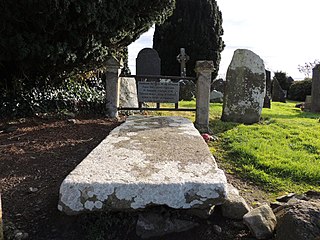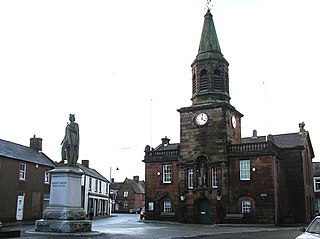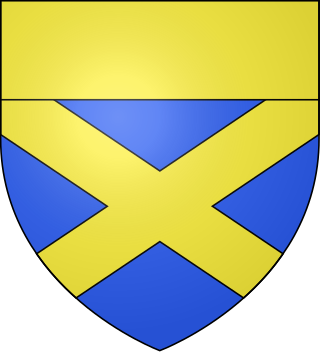| |||||
| Centuries: | |||||
|---|---|---|---|---|---|
| Decades: | |||||
| See also: | List of years in Scotland Timeline of Scottish history 1307 in: England • Elsewhere | ||||
Events from the year 1307 in the Kingdom of Scotland .
| |||||
| Centuries: | |||||
|---|---|---|---|---|---|
| Decades: | |||||
| See also: | List of years in Scotland Timeline of Scottish history 1307 in: England • Elsewhere | ||||
Events from the year 1307 in the Kingdom of Scotland .
Undated

Robert I, popularly known as Robert the Bruce, was King of Scots from 1306 to his death in 1329. One of the most renowned warriors of his generation, Robert eventually led Scotland during the First War of Scottish Independence against England. He fought successfully during his reign to regain Scotland's place as an independent kingdom and is now revered in Scotland as a national hero.

Year 1307 (MCCCVII) was a common year starting on Sunday of the Julian calendar.

Year 1306 (MCCCVI) was a common year starting on Saturday of the Julian calendar.

Edward Bruce, Earl of Carrick, was a younger brother of Robert the Bruce, King of Scots. He supported his brother in the 1306–1314 struggle for the Scottish crown, then pursued his own claims in Ireland. Proclaimed High King of Ireland in 1315 and crowned in 1316, he was eventually defeated and killed by Anglo-Irish forces of the Lordship of Ireland at the Battle of Faughart in County Louth.

Lochmaben is a small town and civil parish in Scotland, and site of a castle. It lies 4 miles (6 km) west of Lockerbie, in Dumfries and Galloway. By the 12th century the Bruce family had become the local landowners and, in the 14th century, Edward I rebuilt Lochmaben Castle. It was subsequently taken by Archibald Douglas, 3rd Earl of Douglas in 1384/5 and was abandoned in the early 17th century. The town itself became a Royal Burgh in 1447.
Robert de Brus, 6th Lord of Annandale, jure uxoris Earl of Carrick (1252–1292), Lord of Hartness, Writtle and Hatfield Broad Oak, was a cross-border lord, and participant of the Second Barons' War, Ninth Crusade, Welsh Wars, and First War of Scottish Independence, as well as father to the future king of Scotland Robert the Bruce.

Robert V de Brus, 5th Lord of Annandale, was a feudal lord, justice and constable of Scotland and England, a regent of Scotland, and a competitor for the Scottish throne in 1290/92 in the Great Cause. He is commonly known as "Robert the Competitor". His grandson Robert the Bruce eventually became King of Scots.
Robert I de Brus, 1st Lord of Annandale was an early-12th-century Anglo-Norman lord and the first of the Bruce dynasty to hold lands in Scotland. A monastic patron, he is remembered as the founder of Gisborough Priory in Yorkshire, England, in present-day Redcar and Cleveland, in 1119.
Robert II de Brus, le Meschin was a 12th-century Norman noble and 2nd Lord of Annandale. He was the son, perhaps the second son, of Robert de Brus, 1st Lord of Annandale.
Alexander Bruce, Earl of Carrick was an illegitimate son of Edward Bruce, Earl of Carrick, younger brother of King Robert the Bruce, and Isabella, daughter of John de Strathbogie, 9th Earl of Atholl. According to The Brus they were married, but The Scots Peerage points out that this is unlikely because he did not immediately inherit his father's lands and titles, Freedom's Sword also says he was illegitimate.
Christian or Christina Bruce, also known as Christian or Christina de Brus, was a daughter of Marjorie, Countess of Carrick, and her husband, Robert de Brus, jure uxoris Earl of Carrick, as well as a sister of Robert the Bruce, King of Scots. It is presumed that she and her siblings were born at Turnberry Castle in Carrick.
Nigel de Brus was a younger brother of King Robert I. Born at Carrick, Ayrshire, Scotland, he was a son of Robert de Brus, 6th Lord of Annandale and Margaret, Countess of Carrick. He supported his older brother in the struggle for the crown of Scotland and fought in the Wars of Scottish Independence.
Alexander de Brus, Dean of Glasgow, was a younger brother of King Robert I of Scotland, who supported his brother in the struggle for the crown of Scotland. He was captured by forces at Loch Ryan, Galloway, Scotland and later executed by the English.
Sir Thomas de Brus was a younger brother and supporter of King Robert I of Scotland, in the struggle against the English conquest. He was captured by the MacDoualls at Loch Ryan, Galloway, Scotland and later executed by the English. Born c. 1284 at Carrick, Ayrshire, Scotland a younger son of Robert de Brus, 6th Lord of Annandale and Margaret, Countess Of Carrick. He was married to Helen Erskine.
The Battle of Loch Ryan was a battle fought on 9/10 February 1307 during the Scottish Wars of Independence near Stranraer on Loch Ryan, Galloway, Scotland.
Sir Christopher Seton (1278–1306), also known as Christopher de Seton, was a 13th-century noble, who held lands in England and Scotland. He was a supporter of Robert the Bruce and obtained Robert's sister's hand in marriage. Present during the killing of John Comyn, Lord of Badenoch at Greyfriars Church, Dumfries, he also killed Sir Robert Comyn, who had rushed to Badenoch's aid. Seton was captured at Loch Doon Castle and executed at Dumfries in 1306.
Malcolm MacQuillan was a 13th-14th century nobleman.
Events from the year 1306 in the Kingdom of Scotland.
Sir Bernard de Monte Alto was a Scottish knight who took part in the War of Scottish Independence, as a supporter of Robert de Brus.

Bernard I de Brus, Lord of Connington and Exton was an English Lord from Huntingdonshire and Rutland. He was the second son of Robert de Brus, 4th Lord of Annandale and his wife Isabella of Huntingdon. Bernard was the younger brother of Robert de Brus, 5th Lord of Annandale, however, is sometimes incorrectly reported to be his son. A charter by Bernard's son, Sir Bernard de Brus II, dated 1283 clearly identifies Bernard II as the grandson of Isabella de Brus, wife of Robert de Brus 4th Lord of Annandale, and the son of Bernard de Brus of Exter.